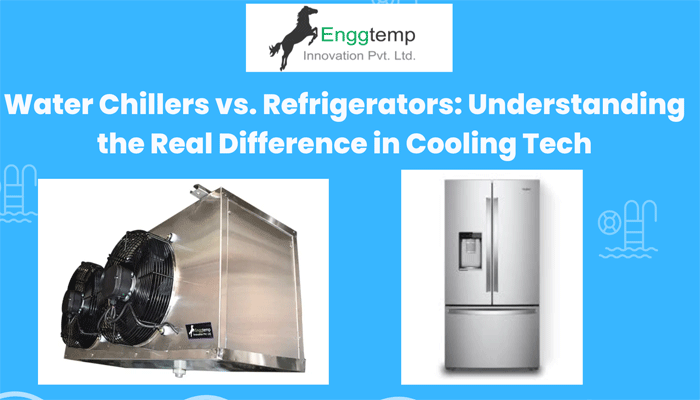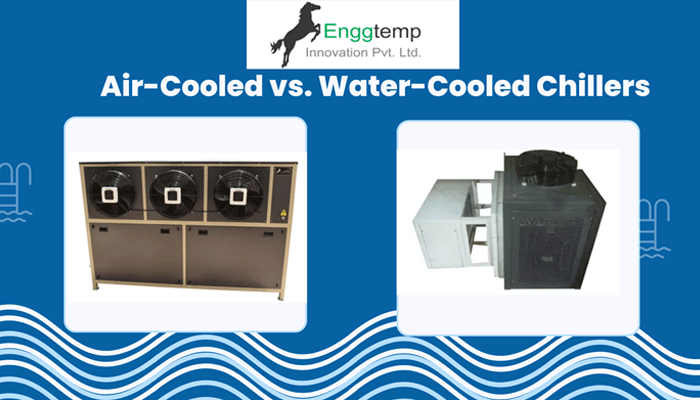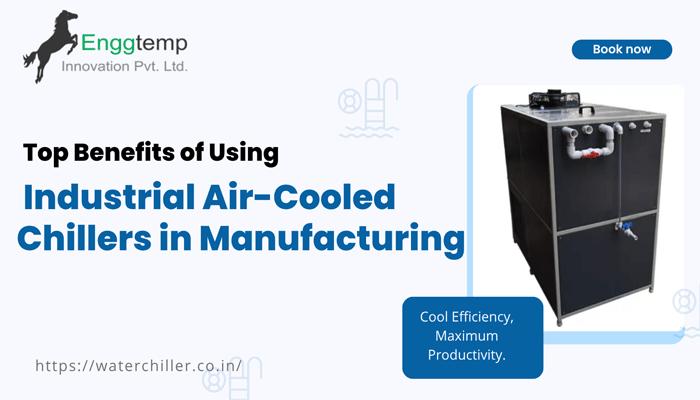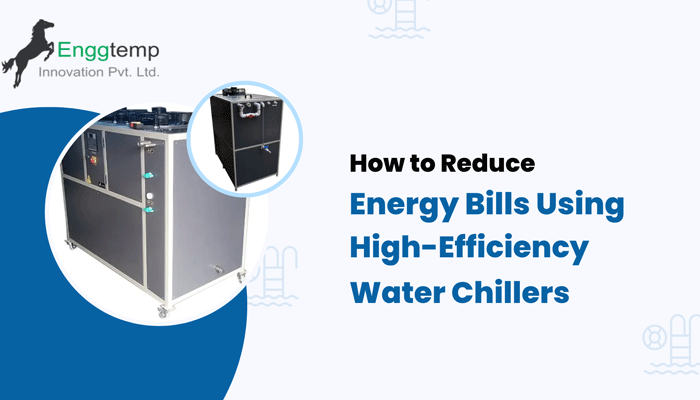
Water Chillers vs. Refrigerators: Understanding the Real Difference in Cooling Tech
By Admin 10 Oct 2025

Behind the Cool: How Water Chillers Keep Industries Running Smoothly
By Admin 29 Aug 2025


Top Benefits of Using Industrial Air-Cooled Chillers in Manufacturing

How to Reduce Energy Bills Using High-Efficiency Water Chillers

Installing a Water Chiller? 7 Costly Mistakes to Avoid

By admin / 10 Oct 2025
In today’s world, cooling technology plays a vital role across industries — from preserving food to maintaining the right temperature in manufacturing, laboratories, and commercial buildings. Two of the most common cooling systems you might hear about are water chillers and refrigerators. Although both perform the fundamental task of cooling, their purpose, technology, and applications differ significantly.
If you’ve ever wondered how water chillers differ from refrigerators, this blog will help you understand their working principles, applications, benefits, and key differences — helping you choose the right cooling system for your needs.
A water chiller is an industrial cooling system designed to remove heat from a liquid (usually water) through a vapor compression or absorption refrigeration cycle. The chilled water is then circulated through heat exchangers to cool equipment, air, or processes. In simpler terms, chillers are used in large-scale applications where precise temperature control is required, such as in factories, hospitals, or commercial buildings.
A refrigerator, on the other hand, is a household or commercial appliance that uses a refrigeration cycle to keep food, beverages, and other perishable items cool and fresh. It maintains a small, enclosed space at a temperature typically between 0°C to 5°C, ideal for storing consumables.
Water chillers operate using a refrigeration cycle, which involves four main components:
Once the water is chilled, it is circulated to different systems or equipment that require cooling. The process is continuous, ensuring stable temperature control.
Refrigerators use the same basic vapor compression cycle, but on a smaller scale. The refrigerant circulates within coils to absorb heat from the interior compartment and release it outside through the condenser coils at the back or bottom of the fridge.
A thermostat regulates the temperature, turning the compressor on and off as needed to maintain consistent cooling.
Water chillers are found in industries and systems that demand high-capacity cooling or process temperature control, such as:
Refrigerators are primarily used for domestic and commercial food preservation, including:
One of the major differences between water chillers and refrigerators lies in their cooling capacity.
Chillers can handle large thermal loads, capable of cooling thousands of liters of water or maintaining temperature for an entire building or industrial process. They can range from small portable units to massive central plant systems.
Refrigerators have limited cooling capacity, designed to maintain a small enclosed space. Even commercial refrigerators or cold rooms cannot match the output of industrial chillers in terms of cooling power.
Industrial chillers can maintain water temperatures as low as -10°C to 25°C, depending on the process requirements. They offer precise temperature control, which is crucial for manufacturing and laboratory operations.
Refrigerators typically maintain a range between 0°C to 5°C (for fresh food) and -18°C for freezers. Their goal is to preserve perishables rather than maintain exact process temperatures.
While both water chillers and refrigerators rely on similar cooling principles, their design, function, and application are entirely different. A water chiller is ideal for industrial or commercial setups that require high-capacity, continuous cooling and precise temperature control. In contrast, a refrigerator is perfect for smaller-scale, everyday cooling needs, mainly food preservation.
Owned & Powered by : #1 Vinayak InfoSoft - SEO Company Ahmedabad ||Industrial Water Cooled Chiller || Cold Room PUF Panels